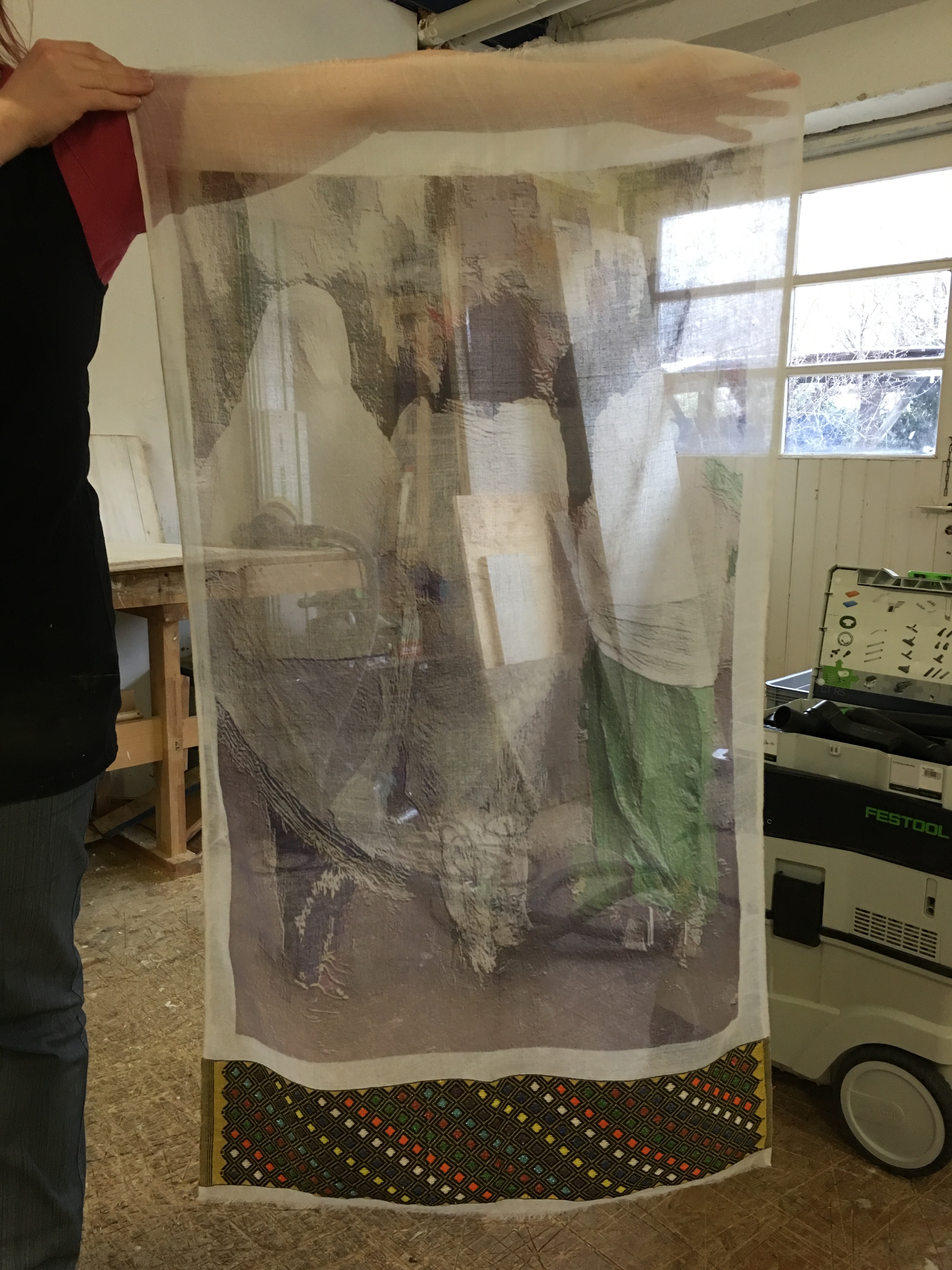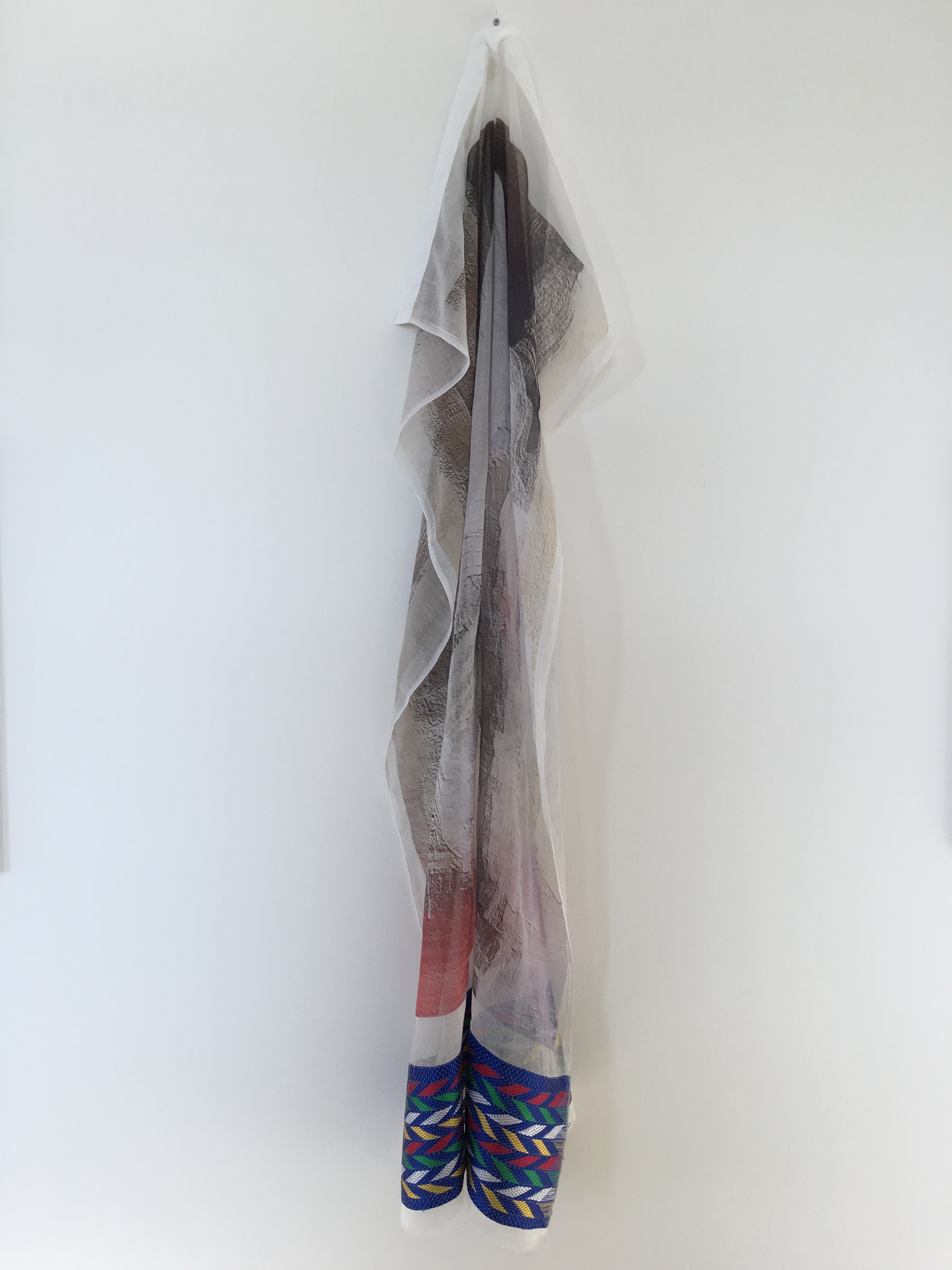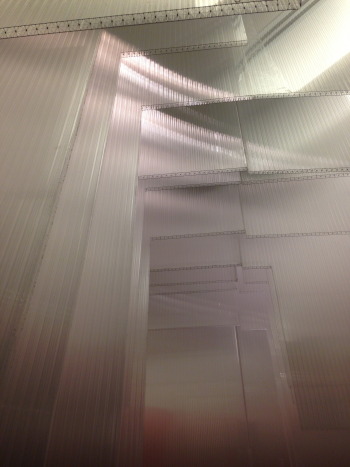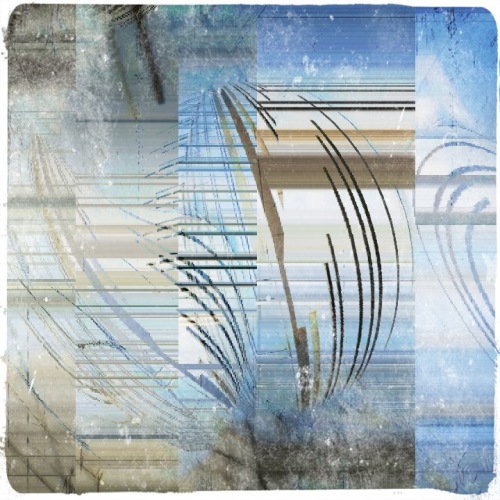#interact2connect
 Friday, March 4, 2016 at 2:47PM
Friday, March 4, 2016 at 2:47PM Using slow-shutter photography on my iPhone, I captured images of women at an Ethiopian festival in Rome. With the aid of various apps I then painted with and on my iPhone screen to create six artworks which I have had printed onto cloth cut from traditional Ethiopian shawls. These artworks make up my new series #interact2connect.
There is a short background to this in my last blog “Linda in Wanderland”.
The almost see through, gauze like cloth of the shawls results in the pieces being fairly transparent. The figures in them seem to be moving in a space/time beyond past, present and future, or simultaneously in all. As a cloth is held up, it interacts with the surroundings it finds itself in, incorporating objects or people that are behind it. This evokes different emotions in the viewer. We are reminded too that everything is connected.

This is a photo of one of the shawls shortly after it was printed.
I would very much like to display these pieces as an installation in a gallery.

Each piece would be hanging draped on the gallery wall when encountered, but visitors to the gallery would be encouraged to take down an artwork, hold it open and even walk around with it, thus allowing the figures in it to interact with the surrounding architecture, art and space.
At this point another dimension would be added. Because I believe that the physical and online worlds can no longer be viewed as entirely separate, visitors would be requested to take photos with these pieces and share them via social media with the hashtag #interact2connect and any other hashtags they might wish to add.
In this way both the ethereal figures in the artworks and the individual sharing the photo would simultaneously be entering the realm of cyberspace - the mindspace we find ourselves in when we connect online.
Later when other images shared under this hashtag are seen, the possibility would exist to make new and interesting connections by engaging with others who, regardless of their physical location or time zone, have shared their archived experience of the event, or commented on a photo.
As I have used current technology to create the artworks, it is my wish that the heart of the art of this installation will be found in the connections made through online sharing.
The vibrant patterns on the borders of the shawls are a stark reminder of the beauty to be found in diversity within unity, and the harmony of the colors asks us to question how we view the other.
The age of connectivity calls for transparency. The gauze like cloth of the shawls asks us to question whether we are authentic when online.
#interact2connect would further raise the question of whether photography should be allowed in galleries and museums in an age when most people want to archive experiences using the technology at their disposal.
Until such time that these pieces find themselves together in a gallery, I have decided that I will carry different ones with me when I am out and about, and ask people to hold them up in their surroundings once I have given them a short background.
This week while in Dubai with two instagrammers, Nilufer and Femi, I allowed the first piece to make its debut in the new phase of City Walk. That the venue included the word “walk” felt appropriate, and it was wonderful to see the background glass shining through, and the reflected green wall pick up the color of the one ladies’ dress. There even seemed to be similar shades of orange and yellow to the colors in the border of the shawl.
The next day I asked a waiter in a cafe to hold up the same piece. Ernesto willingly obliged. I had seen beforehand that there were artworks up on the wall behind him but I only realized afterwards that they were of three women too! The green skirt of Maria Callas on the wall also picked up the color of the transparent lady on the right and the chairs behind the cloth, despite themselves being stationary, added a sense of movement to the transparent figures.
Who knows what further journeys the figures in these cloths will make, and what connections they will lead to.
I wait with anticipation :)
---oOo---
Related: To see one of the journeys the figures have made, check out this steller story!

